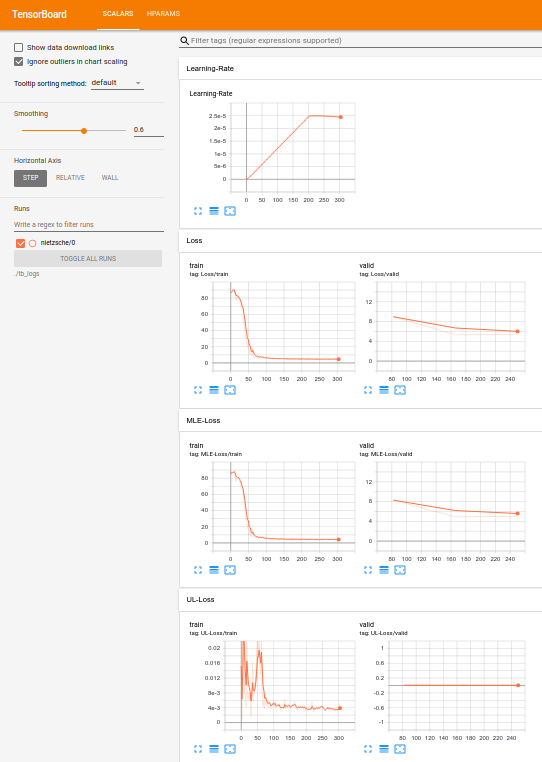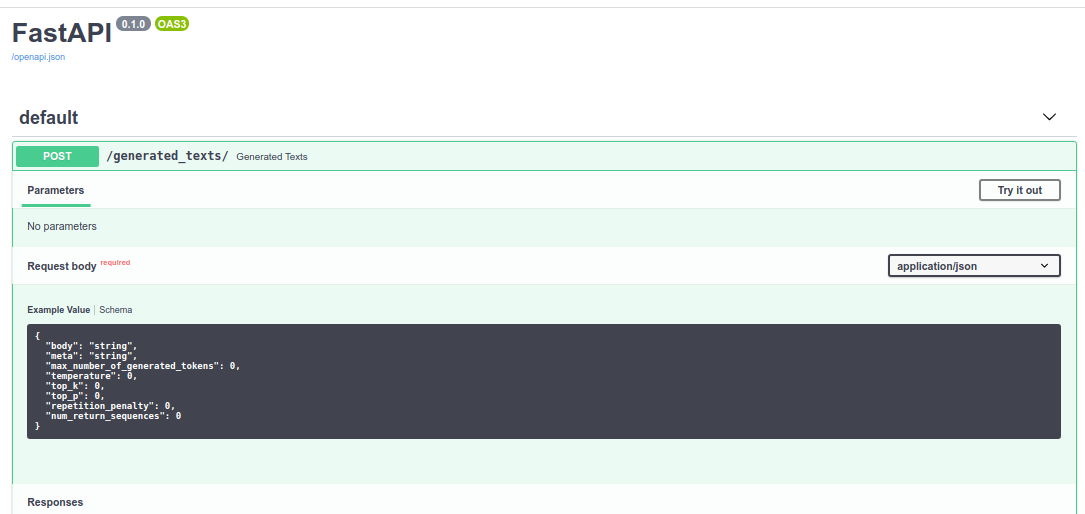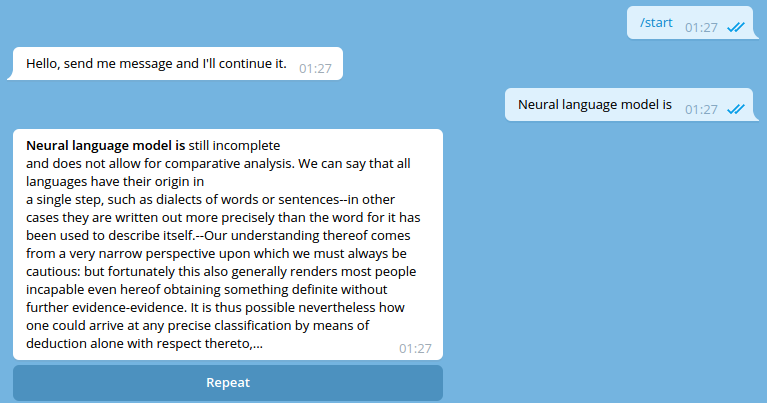Pytorch library for end-to-end transformer models training, inference and serving.
Powered by a list of great libraries.
The library is organized in such a way, that the core sub-package contains all modelling, data structures and data streaming classes.
In tasks sub-package there are all tasks-specific code.
Available tasks:
- Document Language Model - the classic document-base language model training. It also provides application serving for interactive text generation.
For now, there is only 1 task available in the library. So, I'll put an example of this task usage right here in README. When another tasks will be implemented, I'll move all examples in the documentation.
- Automatic LM dataset preparation
- End-to-end transformer LM training
- Unlikelihood loss training
- Training LM with meta data (control codes, CTRL)
- Text generation tricks (top-k, nucleus, repetition penalty, etc)
- Text generation as a service
- Telegram bot client
First, you need two text files (train and validation) which contain raw documents. For this example, files are already placed here:
data/documents/nietzsche/
├── train.documents
└── valid.documents
(If you want to start with your own files, check Input Document Files Format
The library uses pytorch-lightning for training and arguments which are used by
lightning Trainer class are allowed as a command-line arguments for the script below.
To check them all (as well as task-specific args) execute:
python full_stack_transformer/tasks/document_lm/task_runner.py --help
Now, let's train the model:
python full_stack_transformer/tasks/document_lm/task_runner.py \
--experiments_root=./data/experiments/ \
--model_path=gpt2 \
--tokenizer_class_name=HFGPT2DocumentTokenizer \
--batch_size=4 \
--max_meta_len=0 \
--max_body_len=70 \
--ignore_meta_prob=1.0 \
--train_file=./data/documents/nietzsche/train.documents \
--valid_file=./data/documents/nietzsche/valid.documents \
--learning_rate=2.5e-05 \
--num_warmup_steps=10 \
--num_cycles=1 \
--gpus="0," \
--val_check_interval=1.0 \
--max_epochs=10 \
--unlikelihood_alpha=5.0 \
--accumulate_grad_batches=8 \
--experiment_name=nietzsche
If you don't have gpt2 model downloaded, it'll be obtained from the huggingface server (548M).
Also, if you want to use a pre-trained gpt weights, which are stored locally, pass the path
to the model directory, like so: --model_path path/to/local/gpt/model.
Make sure, that you use an appropriate --tokenizer_class_name with your model. Check the
list of available tokenizers: Available Tokenizers.
The training has been started. All experiment related files a placed in the experiment directory:
data/experiments/nietzsche_v0/
├── description.json
├── generated.txt
├── logs
│ ├── debug.log
│ ├── errors.log
│ ├── info.log
│ └── nietzsche
│ └── version_0
│ ├── events.out.tfevents.1589375895
│ └── meta_tags.csv
└── models
├── epoch=5.ckpt
└── epoch=6.ckpt
WARNING!
In 0.2.0 version dynamic data generation is used. There are multiprocessing workers that produce samples for training and there is no graceful shutdown for these workers now. It'll be fixed in next version, but for now please make sure, that all training processes are dead when the training is finished. Or you can kill them manually:
pkill -f nietzsche
Run tensorboard:
tensorboard --logdir=./data/tb_logs/ --port=6006
TensorBoard interface is available here: http://localhost:6006/

Also, text samples are generated during the training on each validation step. They are logged here:
cat data/experiments/nietzsche_v0/generated.txt
...
{
{
"Global step": 14,
"Current epoch": 0,
"Generator params": {
"max_number_of_generated_tokens": 128,
"num_return_sequences": 8,
"repetition_penalty": 1.0,
"temperature": 0.7,
"top_k": 0,
"top_p": 1.0
},
"Generated samples": [
"The last, most important aspect of a good writer...
...
When the model is trained, it could be served for inference:
./full_stack_transformer/tasks/document_lm/serving/run.sh 9228 1 ./ ./data/experiments/nietzsche_v0/models/epoch\=6.ckpt cuda:0
Swagger is available here: http://localhost:9228/docs

If you want to play with the text generation via telegram bot, you need the service run (previous step). Also, you need to obtain telegram api token. It could be easily done via @BotFather.
After you run the application server and got the api token, execute the following:
python full_stack_transformer/tasks/document_lm/telegram/app.py \
--telegram_api_token="API-TOKEN-OBTAINED-FROM-BOTFATHER" \
--text_generator_service_url=http://127.0.0.1:9228
That's it. Go find your bot in telegram and chat:

After you train the model, you may want to perform inference in a code. Check an example of Language Generation.
Raw input document files (train and valid) contains one document per line.
Each document is a dict (json-like) with body and meta(optional) fields.
For example:
{"body": "Article about animals", "meta": "Cats, dogs"}
{"body": "Article about movies"}
{"body": "Another article or document or whatever", "meta": "Some tags"}
...
For now, there are two tokenizers available for the dialog_lm task.
HFGPT2DocumentTokenizerfor huggingface models:gpt2gpt2-mediumgpt2-largegpt2-xldistilgpt2- maybe, there are some more models already. Check official huggingface repo
RuTransformersDocumentTokenizer:- ru_transformers medium size model
- tokenizers fast tokenization and dataset preparation
- transformers model backbones
- pytorch-lightning training process
- fastapi application serving
- aiogram telegram bot serving
Also, I predominantly work with russian texts, so I actively used pre-trained gpt-model and tokenizer (which I wrapped in the fast sentence piece tokenizer from tokenizers library) from the ru_transformers repository.